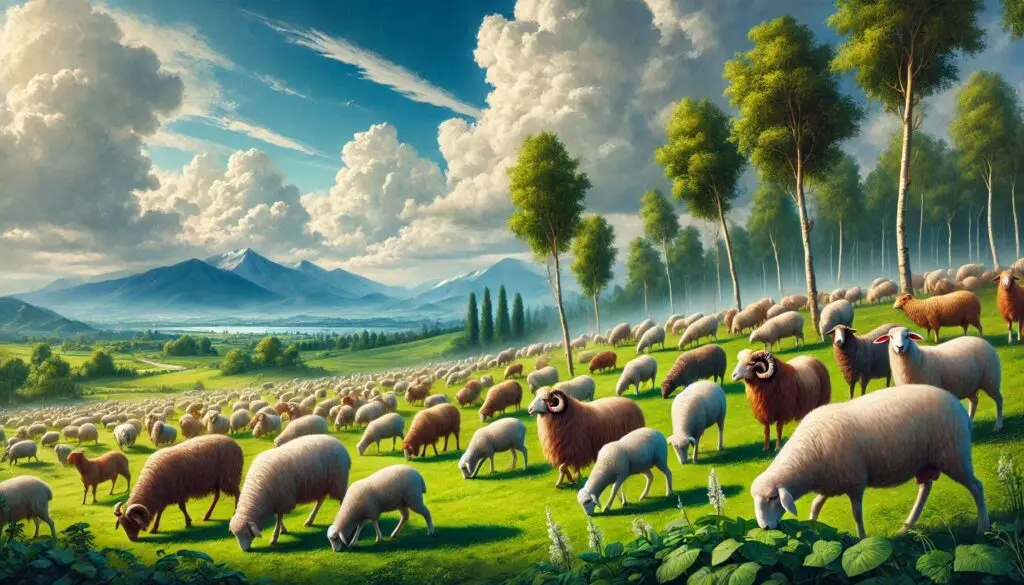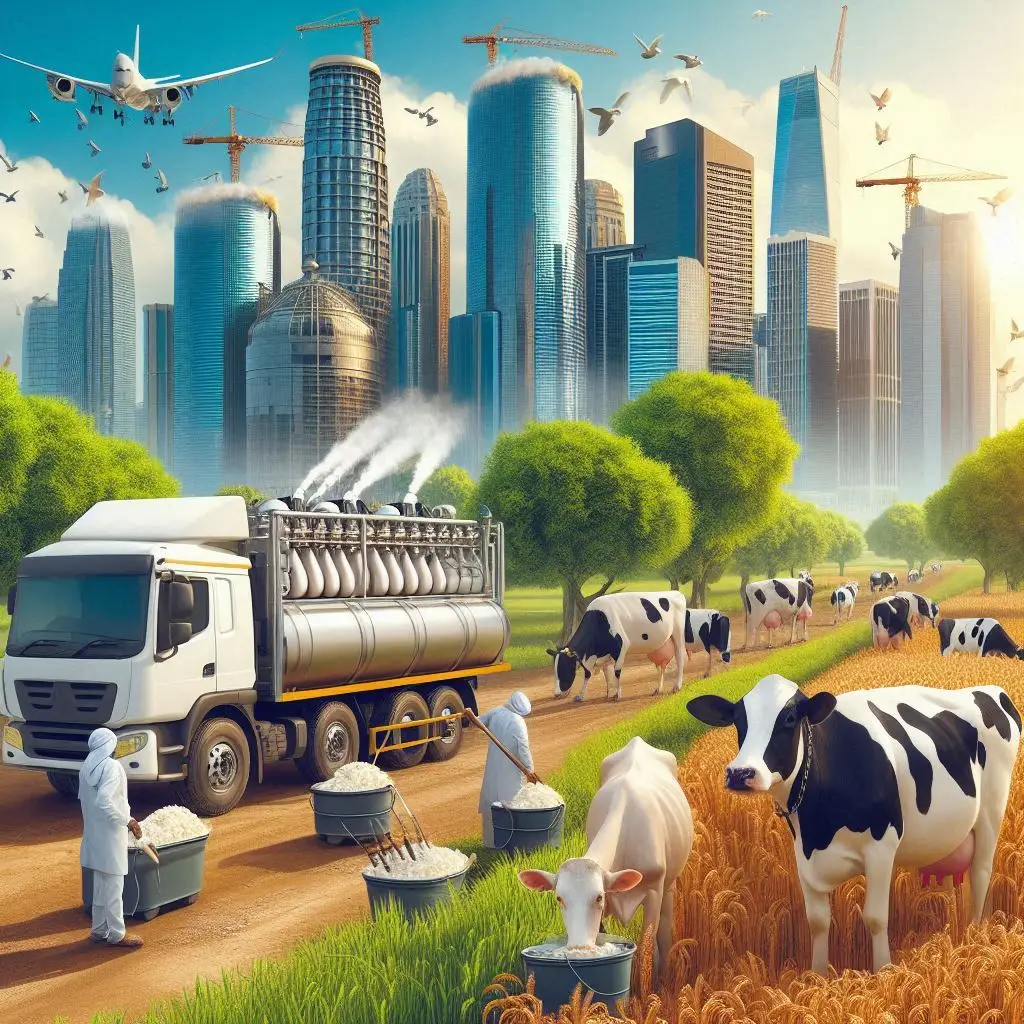Understanding Sheep Breeds

Introduction
Sheep farming plays a crucial role in agriculture worldwide. These animals provide wool, meat, and milk, making them valuable to farmers. In this article, we will explore various sheep breeds, focusing on their characteristics, uses, and importance in different regions.
Importance of Sheep in Agriculture
Sheep are not just livestock; they are integral to many agricultural systems. They help maintain pasture health and contribute to soil fertility through their grazing habits. Additionally, sheep farming supports rural economies by providing jobs and income.
Overview of Sheep Breeds
Sheep breeds can be categorized based on several factors, including wool quality, meat production, and adaptability to different environments. Understanding these categories helps farmers choose the right breed for their needs.
Wool Quality
Wool is one of the primary products obtained from sheep. Different breeds produce varying types of wool:
- Fine Wool Breeds: These include Merino and Rambouillet. They are prized for their soft, fine fibers.
- Medium Wool Breeds: Breeds like Dorset and Suffolk fall into this category. Their wool is versatile and used for various products.
- Coarse Wool Breeds: Breeds such as Lincoln and Romney produce coarser wool suitable for carpets and heavy fabrics.
For more information on wool quality and its uses, check out this article on wool production.
Meat Production
Meat is another significant product derived from sheep. Certain breeds are specifically raised for their meat quality:
- Lamb: Young sheep are known as lambs. They are tender and flavorful.
- Mutton: Older sheep provide mutton, which has a stronger flavor.
Popular meat breeds include:
- Suffolk: Known for its rapid growth and high-quality meat.
- Texel: Renowned for its muscle development and lean meat.
For a deeper understanding of sheep meat production, visit this meat sheep guide.
Adaptability
Sheep breeds have adapted to various climates and terrains. Some breeds thrive in harsh conditions while others prefer milder climates.
- Hardy Breeds: Breeds like the Icelandic sheep are well-suited for cold environments.
- Heat-Tolerant Breeds: The Dorper is known for its ability to withstand hot climates.
For more insights on adaptability in sheep breeds, check out this adaptation study.
Indigenous Sheep Breeds of Jammu and Kashmir
The region of Jammu and Kashmir boasts several indigenous sheep breeds that have adapted to local environmental conditions. Let’s explore some notable breeds from this area.
Gurez Sheep
Characteristics
The Gurez breed is primarily found in the Gurez Valley of Jammu and Kashmir. It is known for its hardiness and adaptability to high altitudes.
Uses
Farmers value Gurez sheep for their quality mutton and coarse wool. The average wool yield ranges from 1.00 to 1.25 kg per year.
For more details about Gurez sheep, refer to this Gurez breed profile.
Bhakarwal Sheep
Characteristics
Bhakarwal sheep are a migratory breed reared by the nomadic Bhakarwal tribe. They are known for their resilience and ability to thrive in rugged terrains.
Uses
This breed produces coarse wool used to make traditional blankets. The average wool yield is around 1.6 kg per year.
To learn more about Bhakarwal sheep, check out this Bhakarwal breed overview.
Changthangi Sheep
Characteristics
Changthangi sheep are large-sized animals adapted to highland conditions in Ladakh. They have a thick coat that protects them from cold weather.
Uses
These sheep are valued for both wool and mutton production, yielding about 1.5 kg of coarse wool annually.
For further information on Changthangi sheep, visit this Changthangi breed article.
Poonchi Sheep
Characteristics
Poonchi sheep are medium-sized with diverse color patterns. They are well-adapted to the local environment.
Uses
Farmers raise Poonchi sheep primarily for meat production.
Purgi Sheep
Characteristics
Purgi sheep are indigenous to the Kargil area of Ladakh. They have a small size with a white coat.
Uses
These sheep are primarily raised for their milk and meat.
General Characteristics of Sheep Breeds
Understanding the general characteristics of different sheep breeds helps farmers make informed decisions about which breed to raise.
Size Variations
Sheep come in various sizes:
- Small Breeds: Such as the Purgi breed.
- Medium Breeds: Like the Poonchi.
- Large Breeds: Such as the Changthangi.
Color Patterns
Sheep also exhibit diverse color patterns:
- Solid Colors: Common in many breeds.
- Multi-Colored Patterns: Found in certain indigenous breeds like Poonchi.
Temperament
The temperament of sheep varies by breed:
- Docile Breeds: Such as Merino.
- More Active Breeds: Like Dorper.
Importance of Sheep Farming
Sheep farming provides numerous benefits that extend beyond just meat and wool production.
Economic Benefits
Sheep farming contributes significantly to rural economies by providing jobs related to breeding, shearing, and processing wool. It also supports local markets through the sale of lambs and mutton.
Environmental Benefits
Grazing by sheep helps maintain healthy pastures. This natural grazing can reduce weeds and promote biodiversity in grasslands.
For more information on the environmental benefits of grazing livestock, read this sustainable grazing article.
Cultural Significance
In many cultures, sheep hold symbolic meanings. They appear in folklore, religious texts, and traditional practices worldwide.
Conclusion
Sheep play a vital role in agriculture through their contributions to food security, economic stability, and environmental sustainability. Understanding the diverse breeds available allows farmers to make better choices tailored to their specific needs.
More from Genetics and Animal Breeding:
Individual Selection in Livestock Breeding






Responses